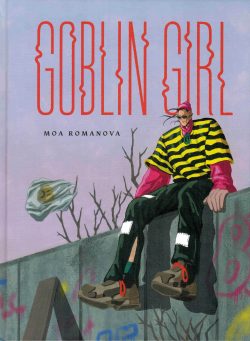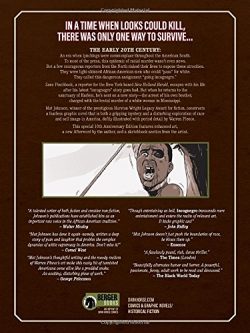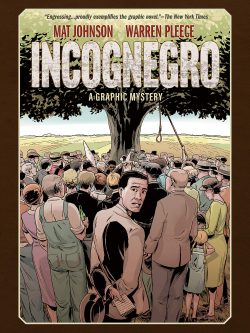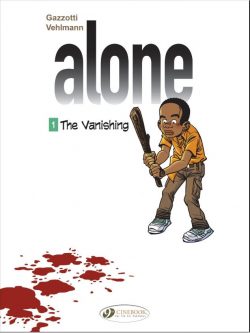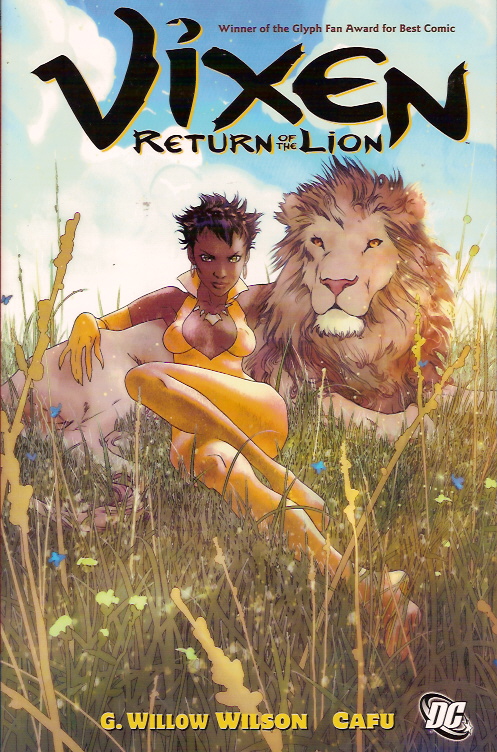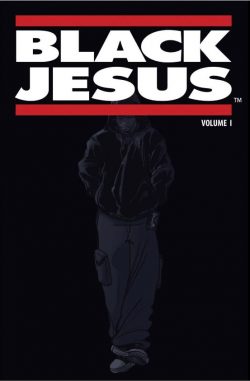
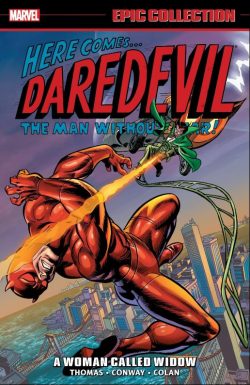
By Roy Thomas, Gerry Conway, Gary Friedrich, Gene Colan, Don Heck, Alan Weiss, Barry Windsor-Smith, Bill Everett & various (Marvel)
ISBN: 978-1-3029-2034-0 (TPB)
Matt Murdock is a blind lawyer whose remaining senses hyper-compensate, making him capable of astonishing acrobatic feats, a formidable fighter and a living lie-detector.
Very much a second-string hero for most of his early years, Daredevil was nonetheless a striking and popular one, due in large part to the roster of brilliant artists who had illustrated the strip. He only really came into his own, however, after artist Gene Colan signed up for the long haul…
The natal DD battled thugs, gangsters, an eclectic mix of established and new super-villains and even the occasional monster or alien invasion. He quipped and wise-cracked his way through life and life-threatening combat, utterly unlike the grim, moody quasi-religious metaphor he became under modern authorial regimes…
In these tales from the pivotal era of relevancy, social awareness and increasing political polarisation, the Man Without Fear was also growing into the judicial conscience of a generation turning its back on old values…
Covering May 1970 -April 1972, this trade paperback and digital compilation chronologically re-presents Daredevil #64-86 plus a crossover with Iron Man #35-36 and sees the once-staid and so-very Establishment Murdock move with the shifting cultural mores as scripter Roy Thomas hands over the reins to newcomer Gerry Conway in an increasingly determined move to make the Man Without Fear cutting edge and relevant… …
The action opens here with Horn-Head prowling the rooftops of Los Angeles. He’s there to find the love-of-his-life, who quit New York when the pressure of sharing DD’s secrets proved too much…
After trailing the star-struck Karen Page to Hollywood, DD gets to take out his bad mood on a handy hood in ‘Suddenly… The Stunt-Master!’ (Thomas, Gene Colan & Syd Shores) before eventually helping his old enemy (a petty criminal biker) get a TV show of his own…
Murdock remains in LA to oversee Karen’s first acting gig – a pastiche of then-hot spooky TV phenomenon Dark Shadows – and prevents her becoming part of a murder spree in ‘The Killing of Brother Brimstone’: a classy whodunit which cataclysmically climaxes one month later in ‘…And One Cried Murder!’
Still stuck on the West Coast, DD tackles another grudge-bearing villain as ‘Stilt-Man Stalks the Soundstage’ (Gary Friedrich, Thomas, Colan & Shores) with now-respectably reformed Stunt-Master ably assisting our hero. Matt eventually leaves Karen to the vicissitudes of Tinseltown, landing back in the Big Apple just in time to become embroiled in a plot blending radical politics and the shady world of Boxing – ‘The Phoenix and the Fighter!’
The Black Panther returns seeking a favour in ‘A Life on the Line’ as kid gangs and the birth of the “Black Power†movement leap from news headlines to comic pages. The same consideration of youth in protest also inspired the seditious menace of ‘The Tribune’ (written by Friedrich) as youthful ideologues, cynical demagogues and political bombers tear a terrified and outraged city apart.
The unrest peaks in Daredevil #71 as Thomas contributes his swansong script and concludes the right-wing manufactured anarchy in ‘If an Eye Offend Thee…!’
New find Gerry Conway assumed the scripting with #72, easing himself in with an interdimensional fantasy frolic wherein the Scarlet Swashbuckler encounters a strange rash of crimes and a mirror-dwelling mystery man named Tagak in ‘Lo! The Lord of the Leopards!’ before plunging readers into an ambitious cosmic crossover yarn which begins in Iron Man #35.
Here the Armoured Avenger, seductive, morally-ambivalent free agent Madame Masque and S.H.I.E.L.D. supremo Nick Fury all seek‘Revenge!’ (illustrated by Don Heck & Mike Esposito) for various vile acts, and specifically the near-fatal wounding of valiant young American agent Jasper Sitwell at the hand of the mercenary Spymaster.
Their efforts – and those of their assembled enemies – are somehow fuelling an alien artefact called the Zodiac Key and, when its creators suck Daredevil into the mix to battle Spymaster and a bunch of super-villains affiliated to the cosmic device, everybody is ultimately shanghaied to another universe for more pointless fighting in ‘Behold… the Brotherhood!’(Daredevil #73, illustrated by Colan & Shores with plot input from Allyn Brodsky) before the epic concludes with extreme briskness in Iron Man #36.
So brisk, in fact, that only the first 8 pages of ‘Among Us Stalks the Ramrod!’ (Conway, Heck & Esposito) are reprinted here, leaving this potent brew of action and suspense to wrap up with Daredevil #74: an impressive and mercifully complete conundrum with DD trapped ‘In the Country of the Blind!’ (art by Colan & Shores) and calling on a group of sight-impaired volunteers to help him thwart a criminal plot to cripple New York…
The social upheaval of the period produced a lot of impressively earnest material that only hinted at the true potential of Daredevil. These beautifully illustrated yarns may occasionally jar with their heartfelt stridency but the honesty and desire to be a part of a solution rather than blithely carry on as if nothing was happening affords them a potency that no historian, let alone comics fan, can dare to ignore.
The Sightless Swashbuckler makes a politically-charged appearance in Daredevil #75 (April 1971) in a drama of devious intrigue and kidnapping that begins as Murdock travels to the banana republic of Delvadia where ‘Now Rides the Ghost of El Condor!’ (Conway, Colan & Shores) offers a canny yarn of revolutionary fervour, self-serving greed and the power of modern mythology.
The saga concludes in ‘The Deathmarch of El Condor!’ – wherein inker Tom Palmer (perhaps Colan’s most effective inker) starts his long association with the penciller.
Guest stars abound in ‘…And So Enters the Amazing Spider-Man!’ when an uncanny artefact appears in Central Park, inviting DD, the webspinner and the Sub-Mariner to participate in a fantastic battle in a far-flung, lost world. The adventure concludes in the Atlantean’s own comic (#40) but as our hero didn’t join the quest, that sequel isn’t included in this tome.
Issue #78 returns to more traditional territory as ‘The Horns of the Bull!’ traces the downfall of petty thug Bull Taurusafter enigmatic mastermind Mr. Kline has him transformed into a savage beast and sets him upon the Scarlet Swashbuckler…
Friedrich scripted cataclysmic conclusion ‘Murder Cries the Man-Bull!’, but plotter Conway was back the following month to spectacularly reintroduce a vintage villain ‘In the Eyes… of the Owl!’: presaging a major format change for the series…
From issue #81’s ‘And Death is a Woman Called Widow’ (inked by Jack Abel), Soviet defector Natasha Romanoff bursts onto the scene as the ubiquitous Mr. Kline is finally unmasked and revealed to be behind most of DD’s recent woes and tribulations…
Sometimes called Natalia Romanova, she is a Soviet-era Russian spy who came in from the cold and stuck around to become one of Marvel’s earliest and most successful female stars. She started life as a svelte, sultry honey-trap during Marvel’s early “Commie-busting†days, battling Iron Man in her debut exploit (Tales of Suspense #52, April, 1964).
She was subsequently redesigned as a torrid tights-&-tech super-villain before defecting to the USA, falling for an assortment of Yankee superheroes – including Hawkeye and Daredevil – before finally enlisting as an agent of S.H.I.E.L.D., freelance do-gooder and occasional leader of The Avengers.
Throughout her career she has always been considered ultra-efficient, coldly competent, deadly dangerous and yet somehow cursed to bring doom and disaster to her paramours. As her backstory evolved, it was revealed that Natasha had undergone experimental processes which enhanced her physical capabilities and lengthened her lifespan, as well as assorted psychological procedures which had messed up her mind and memories…
Following a stunning pin-up of the bodacious Black Widow by Bill Everett, the conspiracy crisis continues with ‘Now Send… the Scorpion’, as Kline – AKA the Assassin – sets a manic artificial arachnid against DD and the Widow, even as his Machiavellian master attempts to suborn Murdock’s greatest friend Foggy Nelson.
At the end of that issue the Scorpion is apparently dead and ‘The Widow Accused!’ by Nelson of the villain’s murder. A sham trial intended to railroad and pillory the Russian émigré ensues in #83, (rendered by Alan Weiss, Barry Smith & Everett), with the Assassin subsequently dispatching brutish Mr. Hyde to ensure his victory.
Against all odds, however, Murdock exonerates Natasha of the charges, prompting the hidden mastermind to take direct action in ‘Night of the Assassin!’ (Colan & Syd Shores). After attacking DD and the Widow in Switzerland – whence the jetsetting former spy had fled to nurse her wounded pride – Kline at last meets final defeat in a stunning and baroque climax to the extended saga.
In the aftermath of that cataclysmic clash, the odd couple are stranded in Switzerland before #85 sees them tentatively beginning a romantic alliance and returning to America on a ‘Night Flight!’ courtesy of Conway, Colan & Shores.
Typically, the plane is hijacked by the bloodthirsty Gladiator, after which another long-forgotten foe resurfaces – for the last time – in ‘Once Upon a Time… the Ox!’ (with stunning Tom Palmer inks) culminating in the broken romantic triangle of Matt, Karen Page and Natasha compelling a life changing relocation for our players from the Big Apple to San Francisco…
The next volume heads even further into uncharted territory…
Rounding out the comics experience are bonus pages including the covers to all-reprint Daredevil Annual #2 and 3, a selection of house ads, unused cover pencils by Colan and his contribution to the 1970 Marvel Artist Self-Portrait project.
Despite a few bumpy spots, during this period Daredevil blossomed into a truly magnificent example of Marvel’s compelling formula for success: smart, contemporarily astute stories, truly human and fallible characters and always magnificent illustration. These bombastic tales are pure Fights ‘n’ Tights magic no fan of stunning super-heroics can afford to ignore.
© 2019 MARVEL.

